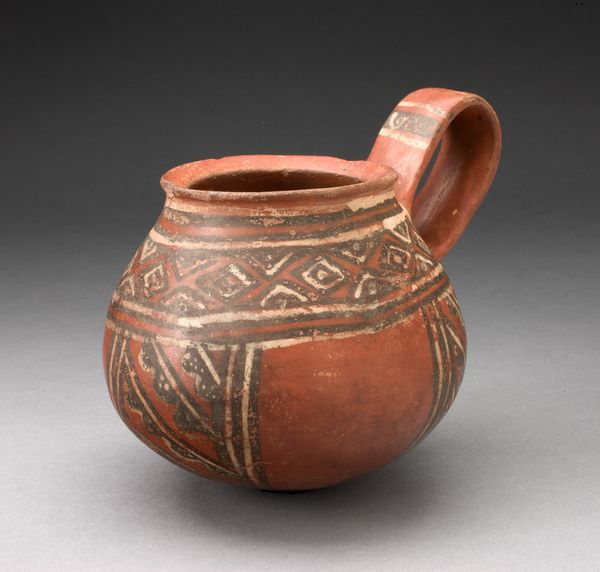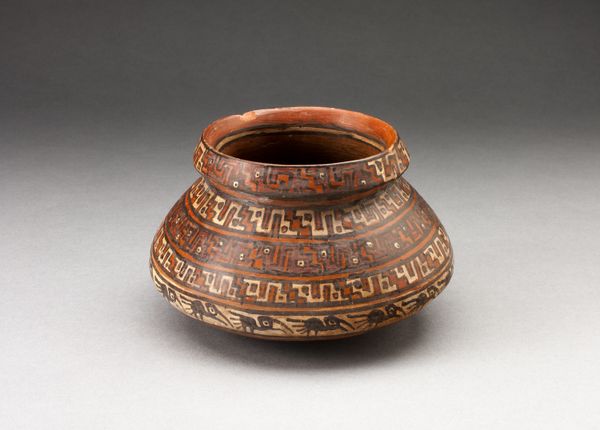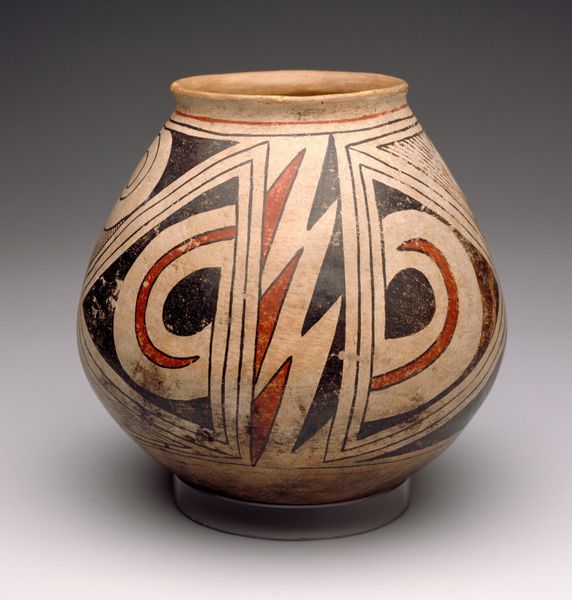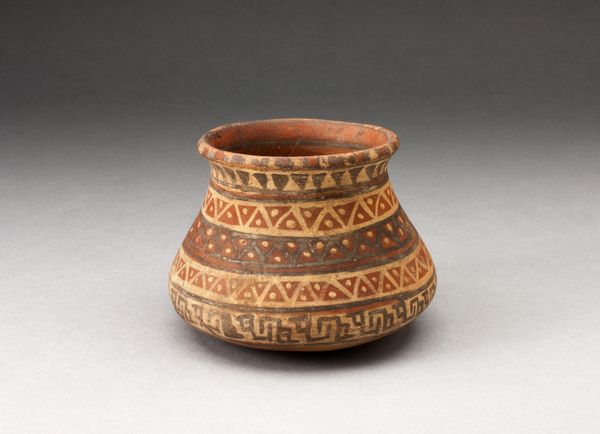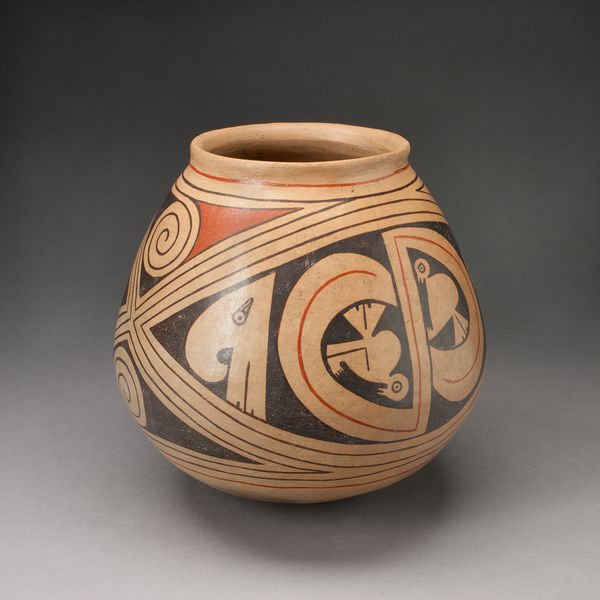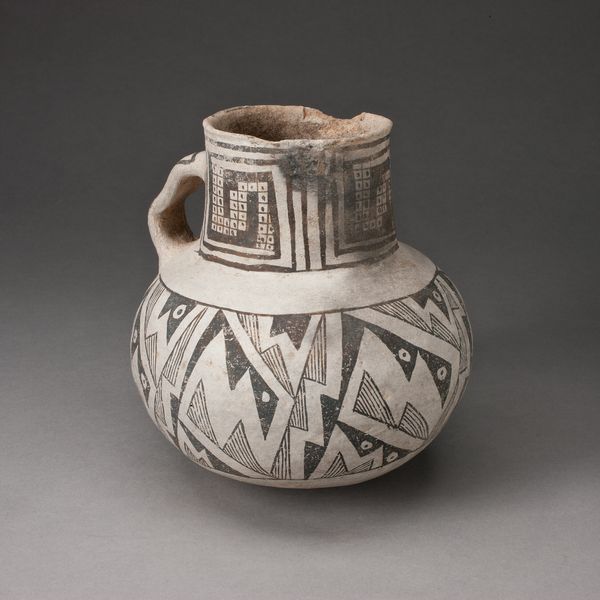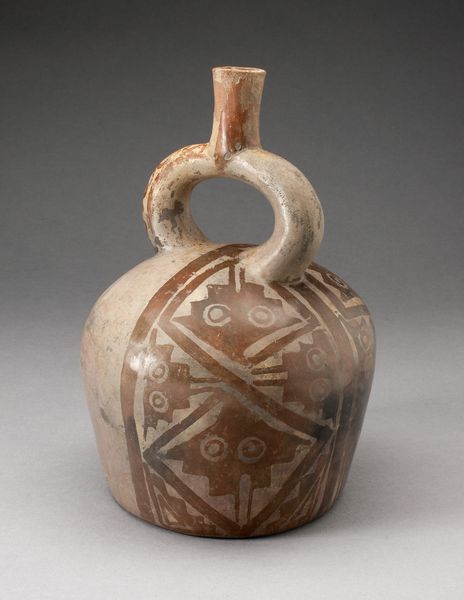
ceramic, earthenware
#
ceramic
#
earthenware
#
geometric
#
ancient-mediterranean
#
ceramic
#
earthenware
Dimensions: 19 x 4 3/4 in. (48.26 x 12.07 cm)
Copyright: Public Domain
This is a Funerary Storage Jar, made by Majiayao, sometime long ago. Look at the way the dark pigment contrasts with the earthenware, creating bold geometric shapes. It is the kind of mark making that feels deeply intuitive, almost like a dance. Imagine the artist’s hand turning the jar as they painted. The dark pigments create a dense, textured surface, especially where they pool and thicken, look near the top. See how the repeated triangular motifs create a rhythm. The lines are strong, yet softened by the irregular surface of the clay. This gives the whole form a feeling of being grounded, imperfect but honest. The relationship between this piece and the work of someone like, say, Agnes Martin is interesting. Both use repetition and simple forms, but to very different ends. Martin’s grids aim for transcendence, while this jar feels like a celebration of the earth. It’s amazing how art can encompass so many different approaches, and still, somehow, all be in conversation.
Comments
minneapolisinstituteofart almost 2 years ago
⋮
The seemingly abstract zigzag designs on the burial storage jar are a stylized version of a human-like stick figure. The neck of the jar in this case represents the head. Built from coils of clay, the vessel relates in shape to the earlier Banshan (2600-2300 BCE) jars shown here, but its proportions are more elongated and its surface is matte and unburnished. Related Machang (2200-2000 BCE) type jars have been excavated in Gansu and Qinghai provinces in northwest China.
Join the conversation
Join millions of artists and users on Artera today and experience the ultimate creative platform.

